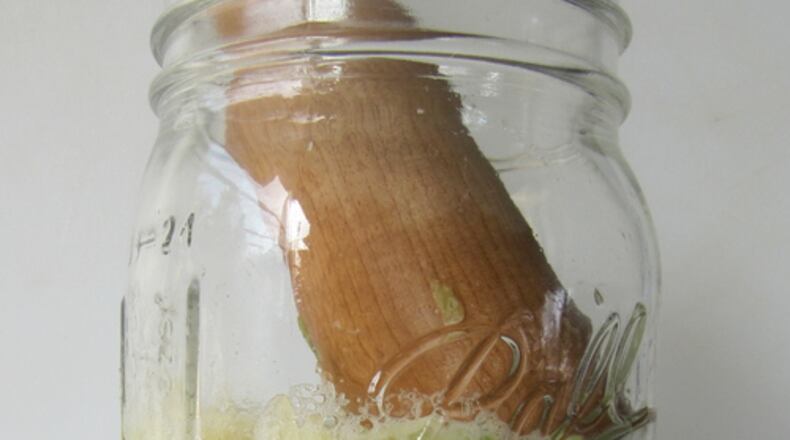Bacteria is not a word you really want to see at the beginning of an article about food.
That said, study after study has shown that “good” bacteria are essential for a healthy gut and a healthy gut leads to many other benefits for your body.
Sure, you can take a daily probiotic to introduce the right bacteria to your digestive system, but through a simple process called lacto-fermentation, you can also introduce those same bacteria to your digestive system through some pretty tasty (and zesty) foods.
Lacto-fermentation is an ancient process that spans the cuisine of many cultures. From Korean kimchi to German sauerkraut, this process adds a tangy pickled spin to your favorite veggies and lactobacillus and other lactic acid bacteria (LAB) to your digestive tract. This process is also a way to “preserve” food making fresh vegetables edible much longer.
Of course this sounds like a lot of work, but lacto-fermentation is really a fairly simple process that takes minimal time “hands on” and then a few days to a few weeks for the fermentation process to complete.
The equipment needed is also very simple and fermentation specific containers and lids can be easily found and purchased via the internet. However, this equipment is not always necessary. My mother used to make homemade sauerkraut from fresh cabbage from the garden in a pottery crock.
In fact, sauerkraut is a wonderfully simple first fermentation project. And believe me, homemade sauerkraut is superior to the kind you buy in the store. The cabbage remains crunchy…not soggy but it still has that wonderful sour “pickled” flavor that’s so delicious on a hot dog or a good deli sandwich. In fact, you might just want to eat it plain…it’s low calorie and it is healthy.
Here’s how to make a small batch of sauerkraut:
You’ll need:
- A small fresh head of cabbage cut into shreds
- 1 1/2 Tablespoons of kosher salt
- A container. For a small batch, a wide mouth quart mason jar will work just fine. You need to make sure the jar is very clean.
- You'll also need a weight of some sort. This will be used to keep the cabbage tamped down and submerged as it begins to release its liquid. Find a smaller jar that will fit inside the mouth of the mason jar and then fill the smaller jar with pie weights. This should work fine.
- Cheesecloth and a rubber band to cover the top of the jar. You want to keep out dust etc., but the kraut will need to "breathe."
- You may also add caraway seeds for flavor but the kraut tastes just fine with nothing but cabbage and salt.
Put the shredded cabbage in a mixing bowl and add the salt. Again make sure the bowl is very clean. Then you begin to massage the salt into the cabbage with your hands (make sure those are very clean too).
The cabbage will start to wilt or get limp and release some water. If you want to add caraway seeds, now is the time to do that.
Pack the jar with the cabbage. Make sure you tamp it down good and pack it tight. Add any liquid that might have been released. Leave at least 2 inches at the top of the jar and place the weight on top of the cabbage.
Cover the jar with the cheesecloth and the rubber band.
For the next 24 hours or so, press down occasionally on the weight (you can let it sit overnight without pressing). The cabbage should release enough liquid so that it is completely submerged. You want it to stay submerged because the brine creates an anaerobic environment for the fermentation to do its work.
Keep the jar in a cool dark place and let it ferment for 3-10 days. Taste it from time to time and when it reaches the desired “sourness” then remove the weight, screw on a canning lid and move it to the refrigerator. It will keep in the refrigerator for months.
About the Author
Featured

